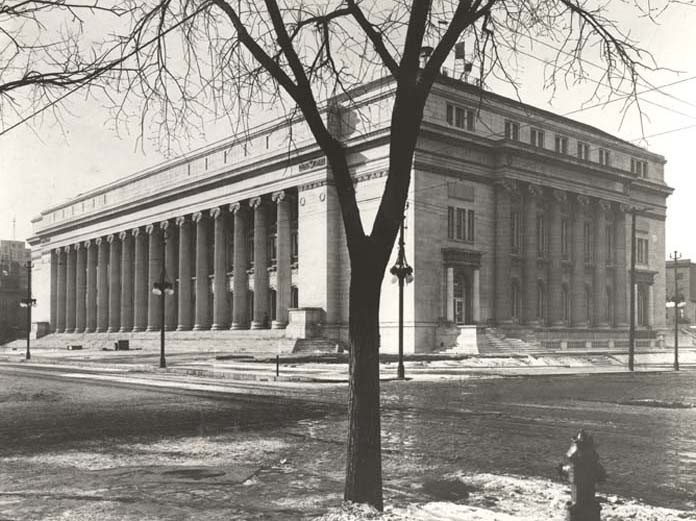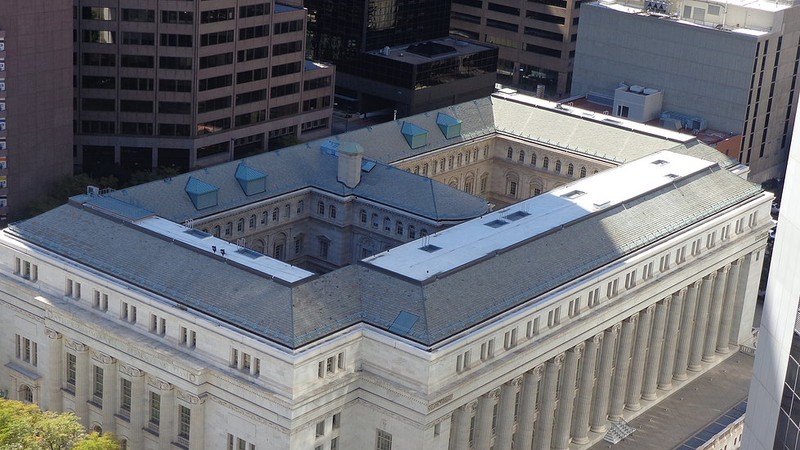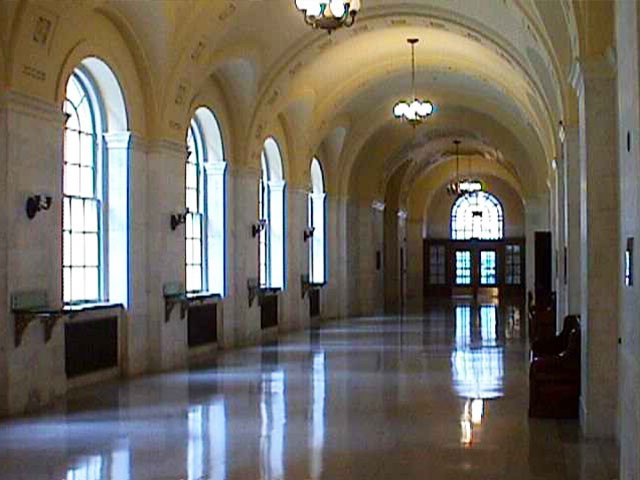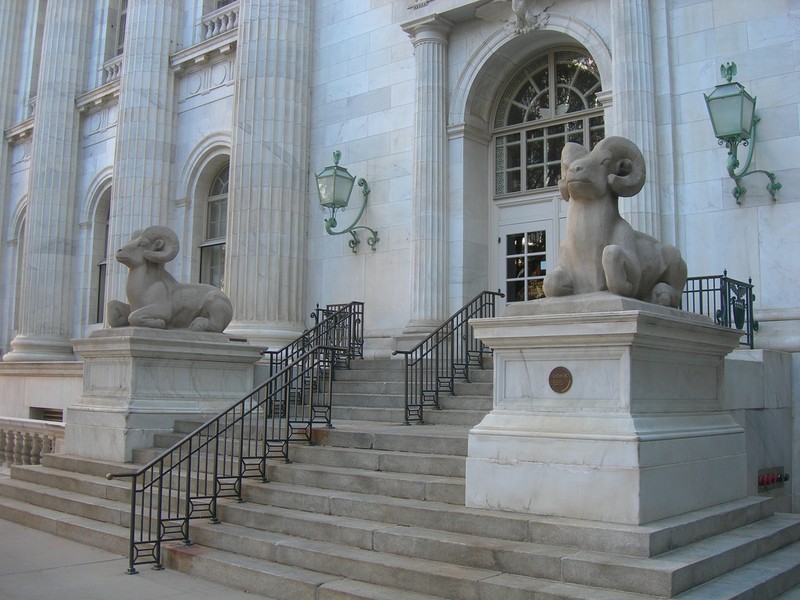Byron White U.S. Courthouse and Denver Federal District
Introduction
Text-to-speech Audio
Images
Byron White Courthouse in Denver shortly after its completion 1916.

Overhead shot of the courthouse.

One of the main hallways within the courthouse

Stone Rocky Mountain Sheep by Gladys Caldwell Fisher. Photo by Jimmy Emerson. Licensed under Creative Commons. https://creativecommons.org/licenses/by-nd/2.0/legalcode

Backstory and Context
Text-to-speech Audio
As the largest city in the vast Rocky Mountain region, Denver has long had a key role as a center of government as well as business. The Byron White Courthouse, completed in 1916, was built by the Treasury Department to house numerous government agencies which had outgrown the original Denver Post Office and Courthouse at 16th and Arapahoe Streets.
New York architectural firm Tracy, Swartout, and Litchfield created a grand Neoclassical building that would have looked equally at home in Washington, D.C., with its sixteen Ionic columnns across the entrance and matching Ionic pilasters (attached half-columnns) on the other three sides. The building is tied to Colorado by the use of white Yule Marble quarried near Aspen, and by the imposing figures of two Rocky Mountain bighorn rams made by Denver sculptor Gladys Caldwell Fisher in 1936.
The courthouse originally housed the U.S. Post Office on its first floor, while federal courts occupied the second. The third and fourth floors housed a collection of federal agencies ranging from the Secret Service to Forestry to Naturalization. The Weather Bureau also had a rooftop platform for the equipment comprising its official weather station.
The decades after World War II saw a rapid growth in population in the west, and an increased federal presence in the region. The new Byron G. Rogers Federal Building and Courthouse (named for a local congressman) was constructed in response. The stripped-down Modernist style of the new complex forms a contrast to the marble-clad grandeur of the older courthouse, but is considered a significant example of mid-century architecture. (See the General Services Administration’s page of links related to Federal Modernism at http://www.gsa.gov/portal/content/101489 for more information.)The Byron G. Rogers Building is most famous as the location of the criminal trial of Oklahoma City bomber Timothy McVeigh, whose lawyers successfully argued for a change of venue away from Oklahoma City.
The older courthouse is now home to the 10th
Circuit Court of Appeals, which moved into the building after an extensive
restoration from 1992-1994. The restoration, which has won awards from
preservationists, included the removal of additions and alterations made by the
postal service over the years. The
building was renamed in honor of Supreme Court Justice Byron White, a Colorado
native who led the University of Colorado Buffaloes to an undefeated regular
season in 1937.
In 2002, a third courthouse, the ten-story Alfred A. Arraj Courthouse, was added to the Federal District at 901 19th Street. The district is also home to the U.S. Customs House, a Renaissance revival structure clad in Yule marble to match the Byron White Courthouse. The Customs House, completed in 1931 and expanded in 1937, stands at 721 19th Street, on the site of the original East High School.
